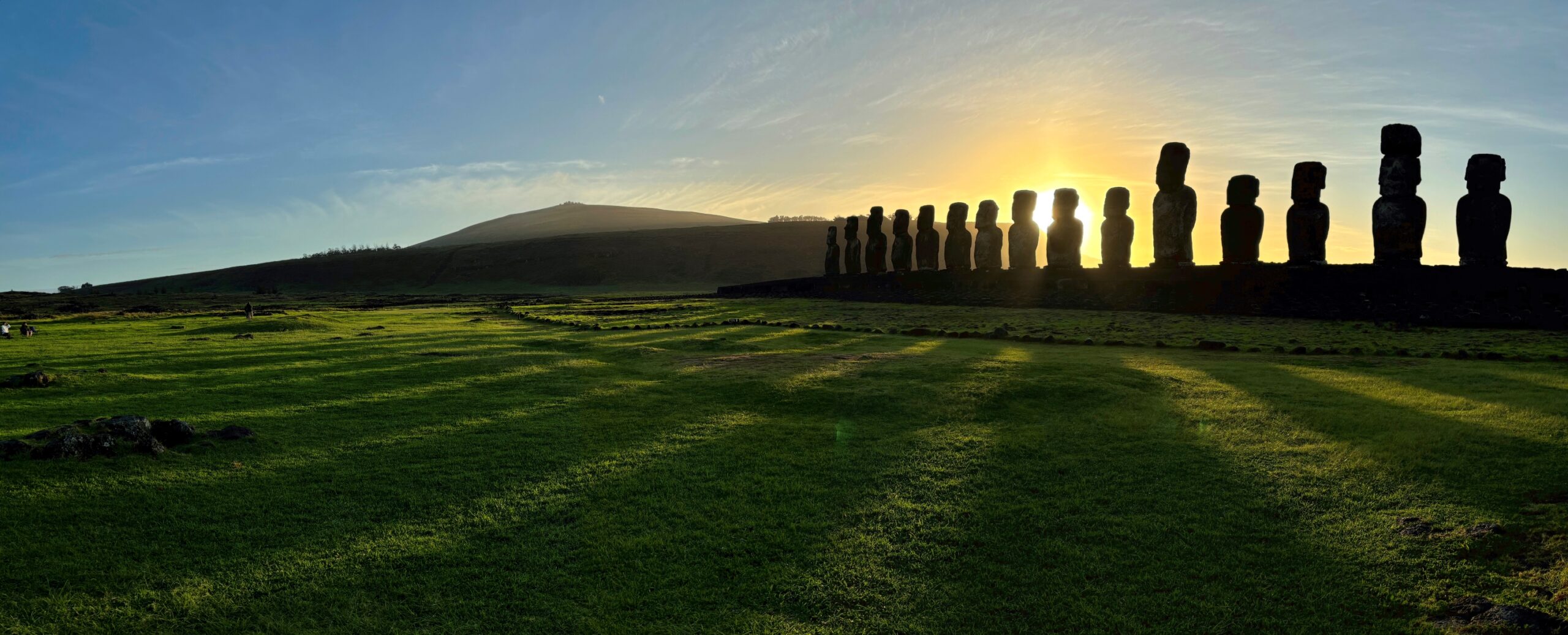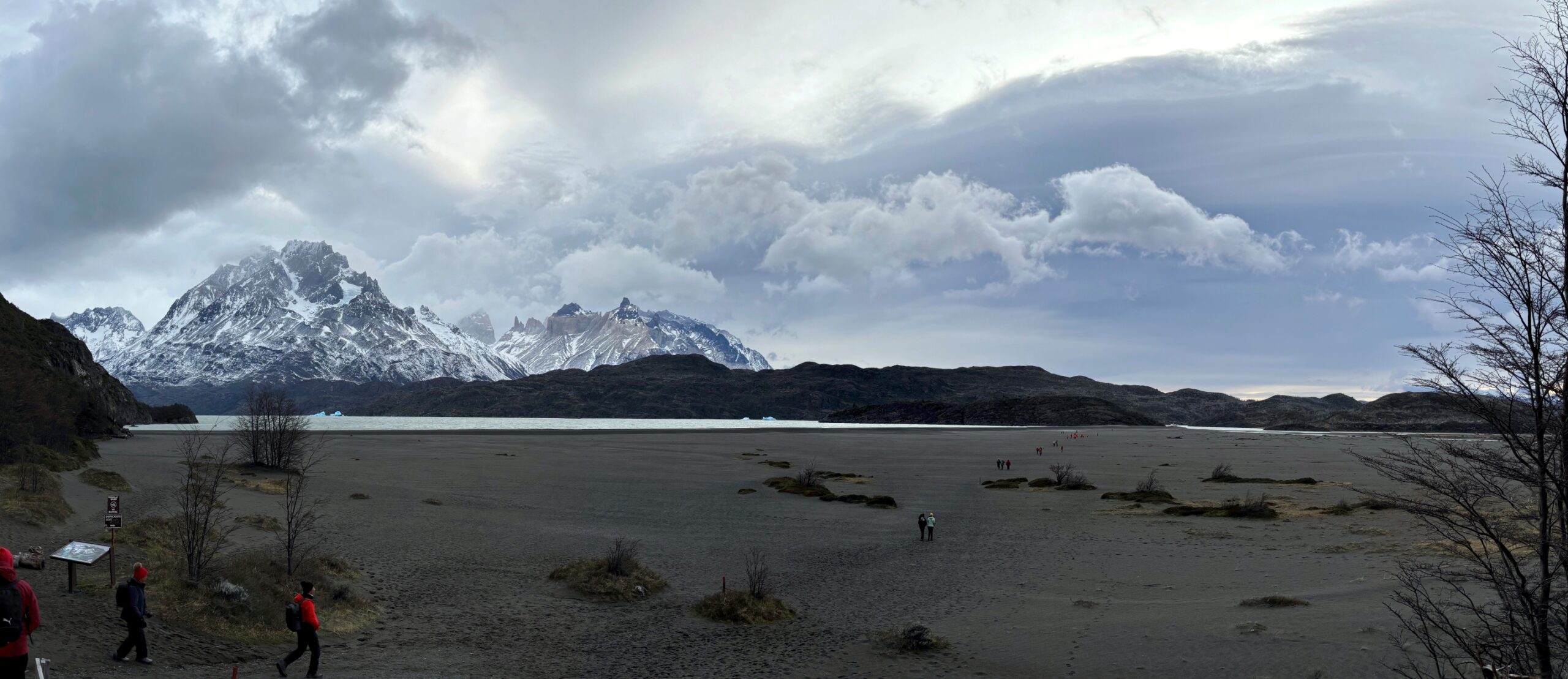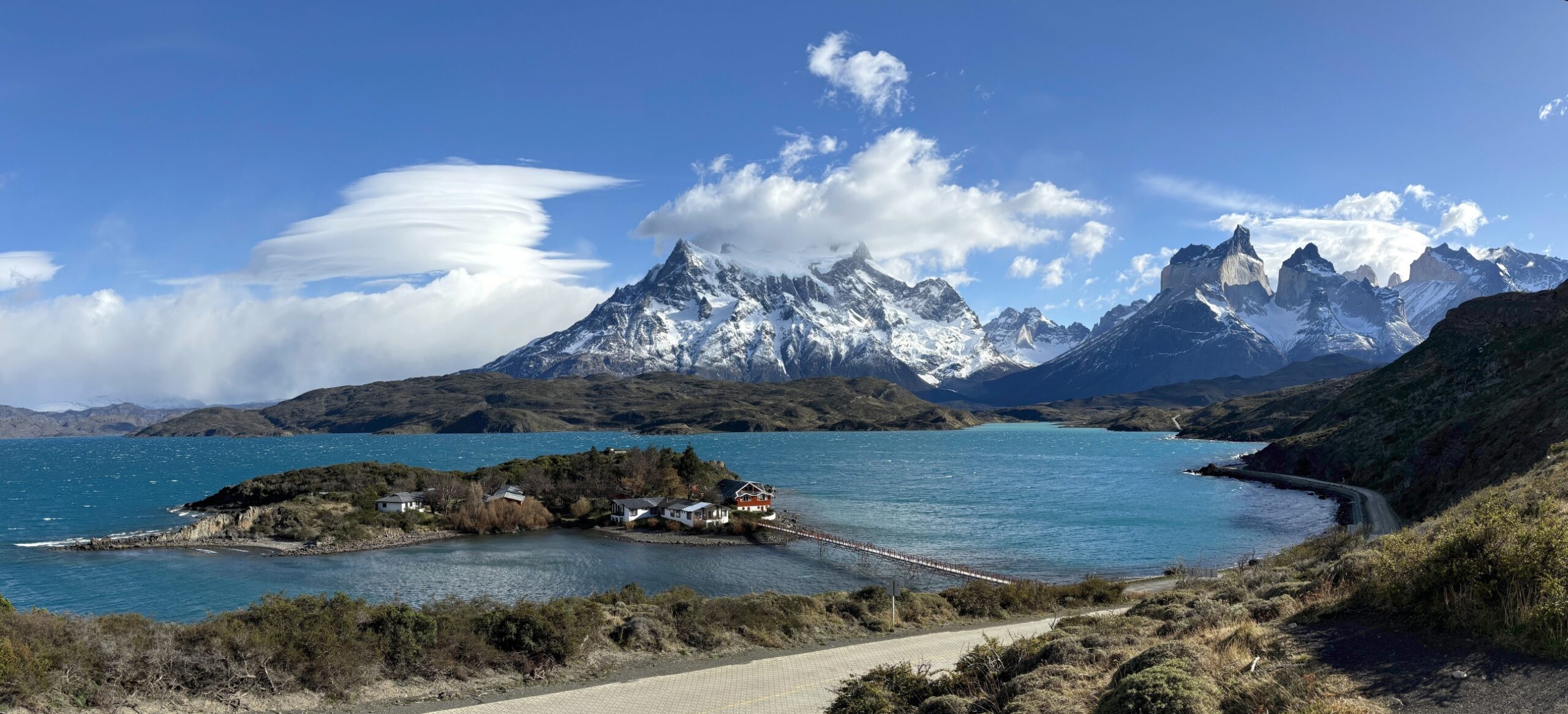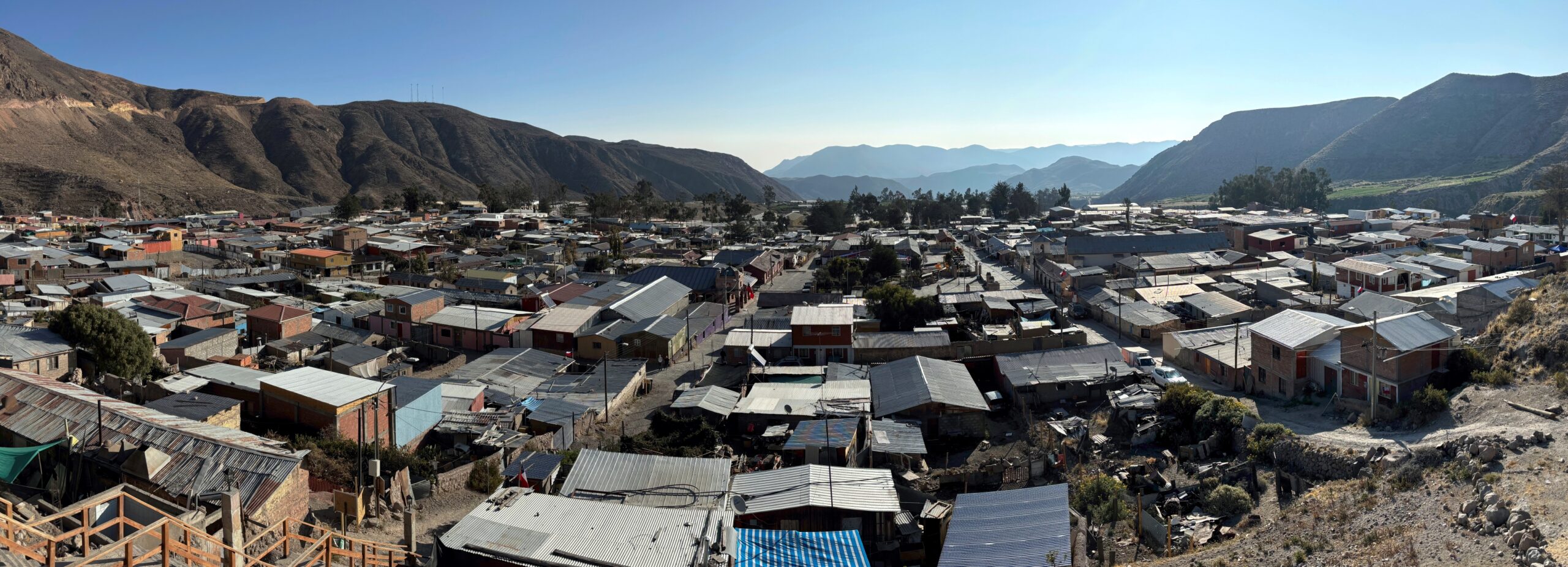Chilean Vistas
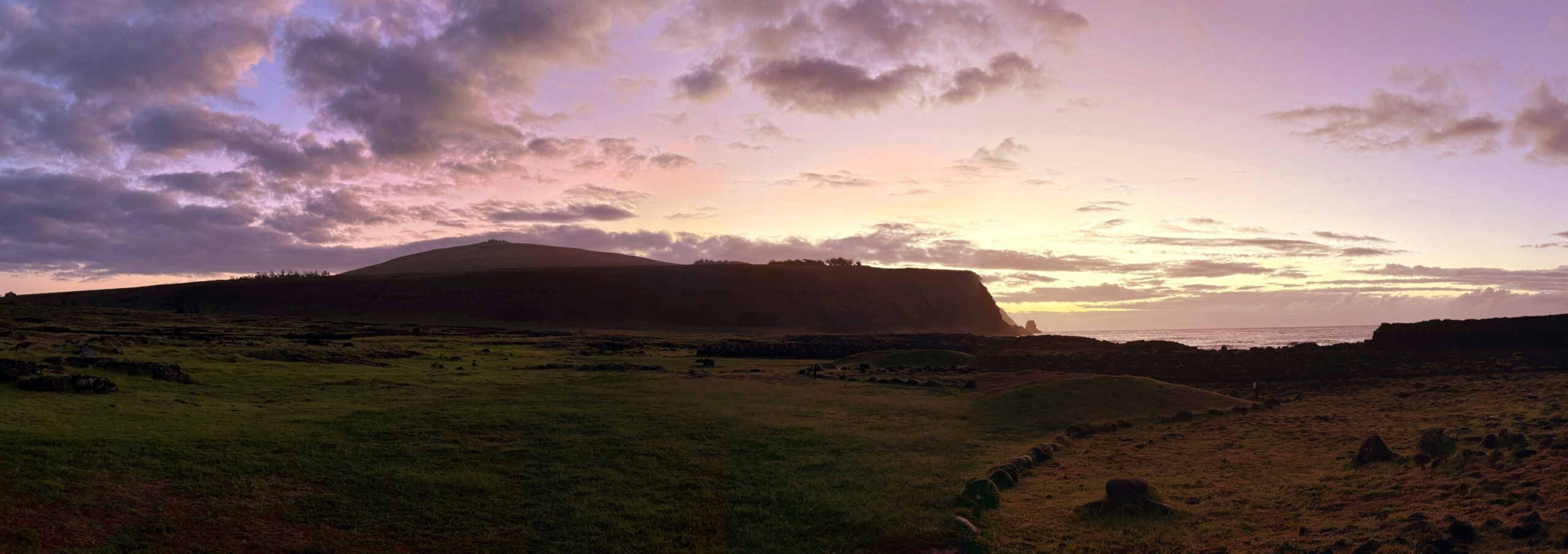 Ethereal tones filling the sky just prior to sunrise at Ahu Tongariki.
Ethereal tones filling the sky just prior to sunrise at Ahu Tongariki.
Maybe it was the expansive landscapes. Or the yearning to capture more in every frame. Or perhaps it was just a time-saving exercise.
But instead of trying to stand still and slowly rotating with my phone’s panorama function turned on, I decided to take a lot of overlapping shots of the scenery and stitch them together using software after returning home. Faster in the present, more work for the future, and with plenty of mixed results. There were some advantages, like greater detail or more natural, linear outputs. There were also some cons. A narrower field of view being the biggest one unless numerous clicks were obtained from different angles preserving the same brightness. A difficult task when the sun was lower in the sky.
The panorama function was not always an option, either. The winds of Patagonia above certain summits were strong enough to ruin every single video or continuous shot attempted.
I recall a more practiced, careful approach back when I used to have a DSLR camera. For this journey however, a quick sequence of images close enough together had to suffice. This was not a photography-focused adventure where we paused too often to line up the perfect composition.
Anyway – here are some panoramas taken from different corners of a country with an abundance of geographical diversity.
The Moai of Rapa Nui’s Ahu Tongariki, during a temperate sunrise in early September. Representations of ancestors of victorious clans, erected and felled before they were positioned and affixed on hidden concrete in the 90s. Long shadows on lush grass and a star that bisects the odd number of statues. Taken at an angle to roughly center the Sun; during the solstices, the sunrise would be directly behind the statues and sunset directly in front, right down the middle.
There are over 900 (discovered) Moai on the island, and most of them are like those shown above – toppled. Primarily due to weather, war, or earthquakes. These are the 8 Moai at Vaihu, knocked over during a 19th century peasant revolt against a powerful family.
The Atacama Desert contains many gems. Among them, salt flats sprinkled with ponds, in great contrast to the rugged brown landscapes that straddle them.
The reason for the desert’s aridity is that it is surrounded by tall mountains. The cycles of precipitation that carry water from the oceans or neighboring nations almost never make it past the elevated terrain of the Andes and the Chilean Coastal Range. This dual rain shadow means places like the Valle de la Luna (Valley of the Moon), seen above, can go centuries without rainfall.
The colors of an Atacama evening, as onlookers gather to observe. The temperature drops quickly, so layers are a must. The Belt of Venus was also visible shortly afterwards, but unfortunately after this site was closed to visitors and we had set off on the road.
The path to a catamaran which takes you to the Grey Glacier of Lago Grey, flanked by Patagonian peaks. The wind was severe, as it is everywhere in Southern Chile. The 30min trek to reach the boat involves a brief hike through a forested area before braving the gales over this massive beach in perpetually chilly conditions.
Taken somewhere on the climb to Mirador Condor, this view of Lago Pehoe shows its central island (home to a few caretakers and lodging) adorned by the Cuernos del Paine. One of the more picturesque locations.
A sight from Mirador Condor, overlooking Lago Pehoe and the Cuernos del Paine. The viewpoint is named for the large birds of prey which we were lucky enough to witness during our time venturing through Torres del Paine park. The winds atop Mirador Condor were intense, lifting me off my feet at times.
Sunset off the coast of Arica. Rocky beachfronts, lots of wildlife, and a populace energized by Independence Day celebrations.
The small commune of Putre in Northern Chile. Our base during drives out to Lauca National Park, close to the Bolivian border.
The barren outcrops above the lagoons of Lauca National Park with the Parinacota Volcano to the right. Lauca is probably where we saw the greatest number of animals, albeit more sparsely during the day.
Hope you enjoyed those brief visions of Chile.
